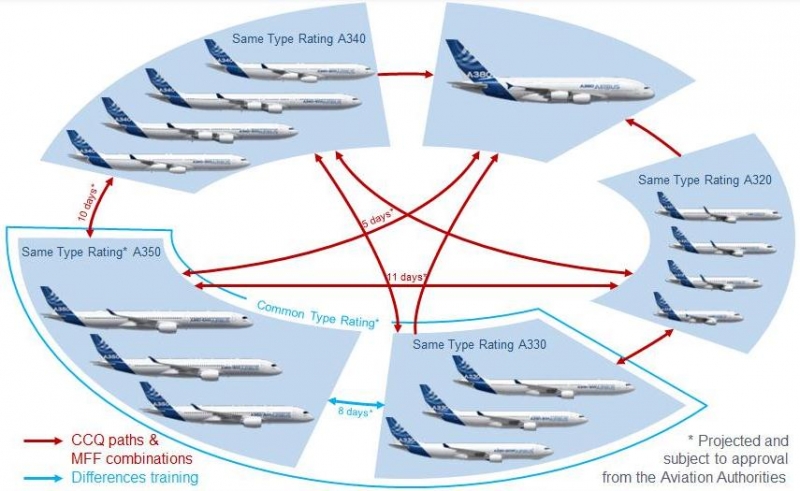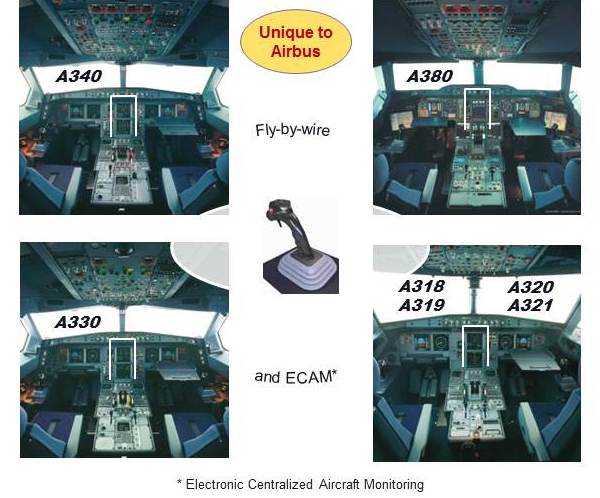

Market Trends
Fly-by-wire technology is at the heart of Airbus foundation
It is common knowledge that airline operations are subject to very high costs and sometimes small profits. Current economic conditions do not make it easy on those who’s job is to run these airlines and that struggle to contain costs as fuel prices rise. When Airbus launched the first fly-by-wire single-aisle aircraft, the A320, it was the first step to create a family of aircraft, all with fly-by-wire controls, that would allow to reduce costs thanks to the flight handling and procedural commonality that this technology would provide.
Flight operational commonality between Airbus aircraft, including the brand-new A350 XWB, is reflected in four concepts – Same Type Rating (STR), Cross Crew Qualification (CCQ), Mixed Fleet Flying (MFF) and Common Type Rating (CTR).
Same Type Rating (STR) allows flying all aircraft of the same Family with virtually no extra training. This is the case for example between all members of the A320 Family or the future A350 XWB Family (A350-800, A350-900 and A350-1000) where a pilot will have a single license endorsement to fly all members of the same Family.
Cross crew Qualification (CCQ) is reduced training for pilots moving from one Airbus aircraft type to another. The standard duration of a full transition course is 24 training days. Flight operational commonality allows to reduce the number of training days, thus saving in course fees, hotel and trip expenses as well as decreasing the time that the pilot is not flying for the airline. As an example, for an A320 pilot to gain an A330 license would take no more than seven training days. Typical savings perceived by airlines practicing CCQ can amount to $200 000 per aircraft per year.
MFF is the operation of multiple Airbus aircraft types, requiring different ratings with one pool of pilots. As an example, this would mean for an airline that a single pool of pilots could be qualified to fly the A330 and the A340 when performing a minimum number of take-offs and landings in both types in order to maintain currency. Some airlines also apply MFF between their A320 Family fleet and their long range fleet of A330s or A340s, thus providing pilots with the opportunity of flying different sectors, spending less time away from their homes increasing overall pilot productivity. This allows airlines to save an average of $400 000 per aircraft per year because of the reduced number of pilots required. The combine use of CCQ and MFF can ultimately increase total pilot productivity up to 20 percent.
With the A350XWB, Airbus will introduce the concept of Common Type Rating (CTR) with the A330. With a difference training not requiring the use of a Full flight simulator and not exceeding eight days, a single license endorsement A330/A350 will allow the pilot to fly both types as one. In addition, CCQ and MFF principles will continue to apply with the other Airbus aircraft types.
Over 50 Airbus operators worldwide are already enjoying savings brought by Cross Crew Qualification while pilots of 30 operators fly several aircraft types concurrently thanks to the Mixed Fleet Flying concept. Flight operational commonality thanks to fly-by-wire technology is a perfect example of an innovation bringing real added value to an airline’s operations.
For more information contact:
Jean Michel Roy
Airbus Test Pilot
jean-michel.roy@airbus.com

